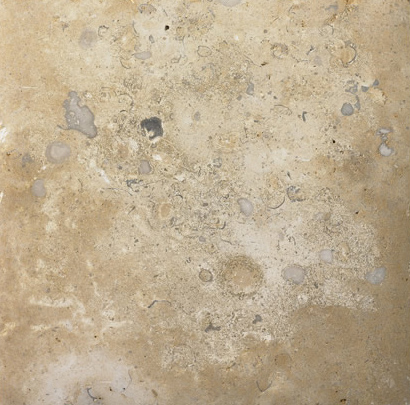
This new idea comes from two recent blog posts. If you haven’t already done so, be sure to read the blog post about How They Built the Pyramids. Geopolymer is a subject I’ll be returning to again and again because it makes so much sense on so many levels. In addition, the blog post last week on CEB floors was a bit hit. (See Cheap and Easy Brick Floors.) The fabulous look, simplicity and durability of CEB pavers make them a top choice for flooring.
With these two ideas fresh in my mind, it just occurred to me that you could use geopolymer to cast pavers for floors and garden paths any size and shape you want. This would eliminate the need for a CEB press, use no cement and utilize 100% natural local materials. And the clincher for me? The material (loose limestone) turns to actual stone. Your floor would last indefinitely. You could remove pavers if necessary to access your radiant heat flooring. Old pavers could be recycled over and over again just like stone… because it is stone. All you’re doing is adding the binder to ‘glue’ the material back together. Brilliant, no? It’s certainly a step or two above ugly concrete.
Okay, so no system is perfect. Let’s briefly discuss some of the drawbacks and challenges involved with making your own geopolymer pavers. For one, you’d have to experiment a bit. Materials would vary – primarily the limestone and kaolin clay – and so you’d have to make a few samples to find out what works best. There are very few resources that describe in detail how to do this. You’d have to read what’s available from the Geopolymer Institute and work things out. So this is not an out of the box solution. Plus, you’d have to grind and polish the pavers if you wanted a refined look like in the image above. This isn’t necessary because the natural look of limestone is quite beautiful, but rough surface would be difficult to clean. I would try casting the pavers with extra moisture (like the lower blocks in the video mentioned above) and try for a smooth finish that doesn’t need grinding/polishing.
Image credit: White Hall

I think that natural pavers are the best
Yes, that would be my first choice. But they’re not always available.
I’ll be very interested to see what sort of recipe you come up with for the geopolymer cement. I’m looking forward to trying this myself.
Doug
It’s going to take some time. Some things have to be tracked down and delivered from a major city. It’s going to require experiments.
No doubt. What I’m looking for myself right now is a basic recipe to serve as a starting point for sourcing materials and experimenting. I wonder if anyone has purchased the applications book from the Geopolymer Institute and reviewed it enough to know whether or not it provides such a thing.
Doug
There are more geopolymer videos and tech papers on the Internet. I haven’t bought the book but it sure seems like the formulas would be covered in detail.
Here’s a good list of tech reports:
http://www.2dix.net/archives/new-pdf/geopolymer-concrete-pdf.php
Some labs are doing geopolymer research with fly ash and slag.
http://www.physorg.com/news173454176.html
You could use the geopolymer mix in a CEB press to make very dense stone blocks. The process would be faster and the blocks would probably be stronger.
I’m trying to track down the necessary materials to make a test earthbag. Once I have the materials, it would be easy to test this out in a CEB press.